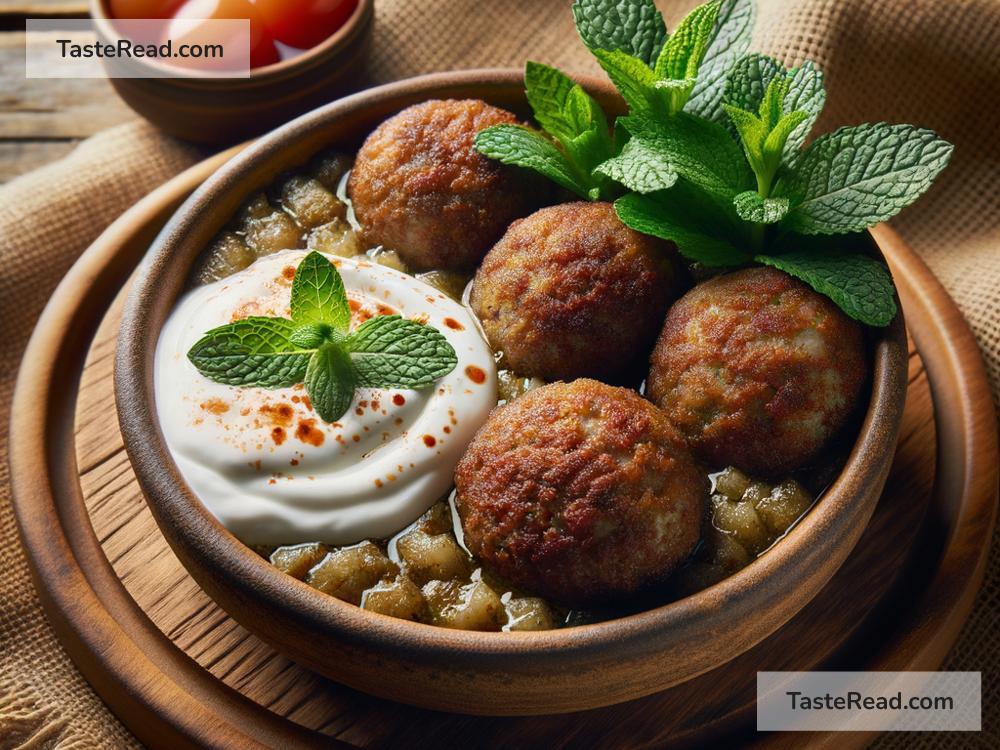Title: The Fascinating Journey of Kibbeh: From Syrian Origins to Middle Eastern Delight
In the rich tapestry of Middle Eastern cuisine, few dishes capture the imagination quite like Kibbeh. This beloved delicacy, with its humble beginnings in Syria, has traversed borders and won hearts, becoming a staple not just in its homeland but across the entire Middle East. But how did a simple dish of ground meat and bulgur wheat achieve such acclaim? Let’s dive into the delicious story of Kibbeh, exploring its origins, evolution, and why it fascinates food lovers around the world.
The Roots of Kibbeh
Kibbeh’s story starts in the ancient landscapes of Syria, where it has been a culinary tradition for centuries. The word ‘Kibbeh’ comes from the Arabic for ‘ball,’ reflecting the most common shape in which this dish is served. However, its history likely goes back even further, with some historians suggesting that variations of Kibbeh were eaten in medieval times, possibly introduced by the nomadic Bedouins. They needed food that was nutritious, long-lasting, and easy to prepare during their travels across the desert.
At its core, Kibbeh is simple and consists of two primary ingredients: finely ground meat (usually lamb or beef) and bulgur wheat. The meat is mixed with the bulgur, onions, and a melange of spices like cumin, cinnamon, allspice, and mint, which gives Kibbeh its distinctive flavor. Once mixed, it can be shaped into balls or patties and then either fried, baked, or even eaten raw, depending on the recipe and regional preferences.
Kibbeh’s Journey Beyond Syria
From the bustling markets of Damascus and Aleppo, Kibbeh began its journey across the Middle East, carried along by trade, migration, and the shared culinary traditions of the Arab world. Each country and region it touched added its unique twist, leading to a delightful variety of forms and flavors. For instance, in Lebanon, Kibbeh is often served raw, similar to tartare, and known as Kibbeh Nayyeh. In Iraq, it takes the form of Kibbeh Mosul, a giant dome of Kibbeh filled with mincemeat, nuts, and raisins.
What makes Kibbeh so adaptable to different tastes and iterations is its incredible versatility. Its base ingredients are like a canvas, allowing cooks to experiment and adapt the dish to local flavors and preferences. This adaptability is a big reason why Kibbeh seamlessly integrated into the cuisines of various Middle Eastern countries, each claiming it as their own version of comfort food.
The Significance of Kibbeh in Middle Eastern Culture
Kibbeh is more than just a dish; it’s a cultural artifact, representing the communal and hospitable spirit of the Middle East. Preparing and sharing Kibbeh is a social activity, often involving family members who gather to mix, shape, and cook together. It’s a dish served during celebrations, holidays, and significant life events, acting as a symbol of unity and love.
Moreover, the art of making Kibbeh is passed down from generation to generation, with each family boasting its own special recipe or technique. This culinary inheritance creates a living connection to the past, preserving traditions and memories in every bite.
Why Kibbeh Captivates Food Lovers Around the World
Kibbeh’s appeal to global food enthusiasts lies in its rich, spiced flavor and the engaging texture that contrasts the crispy exterior with the soft, flavorful interior. But beyond its taste, Kibbeh tells a story of cultural exchange, adaptation, and the shared human experience of coming together over a meal. It embodies the essence of Middle Eastern cuisine: vibrant, diverse, and rooted in tradition yet open to change and innovation.
The popularity of Kibbeh around the world is also a testament to the growing interest in Middle Eastern cuisines, driven by a desire to explore new flavors and cultural histories. From high-end restaurants in major cities to street food stalls, Kibbeh has found a place in the hearts and plates of many outside its traditional home.
Conclusion
From its humble beginnings in Syria to becoming a beloved delicacy across the Middle East and beyond, Kibbeh’s journey is a culinary adventure worth exploring. It showcases the power of food to cross cultural boundaries, bring people together, and tell the story of human creativity and resilience. Whether you enjoy it fried, baked, or raw, Kibbeh is more than just a meal; it’s an experience—a delicious taste of the rich history and vibrant cultures of the Middle East.


